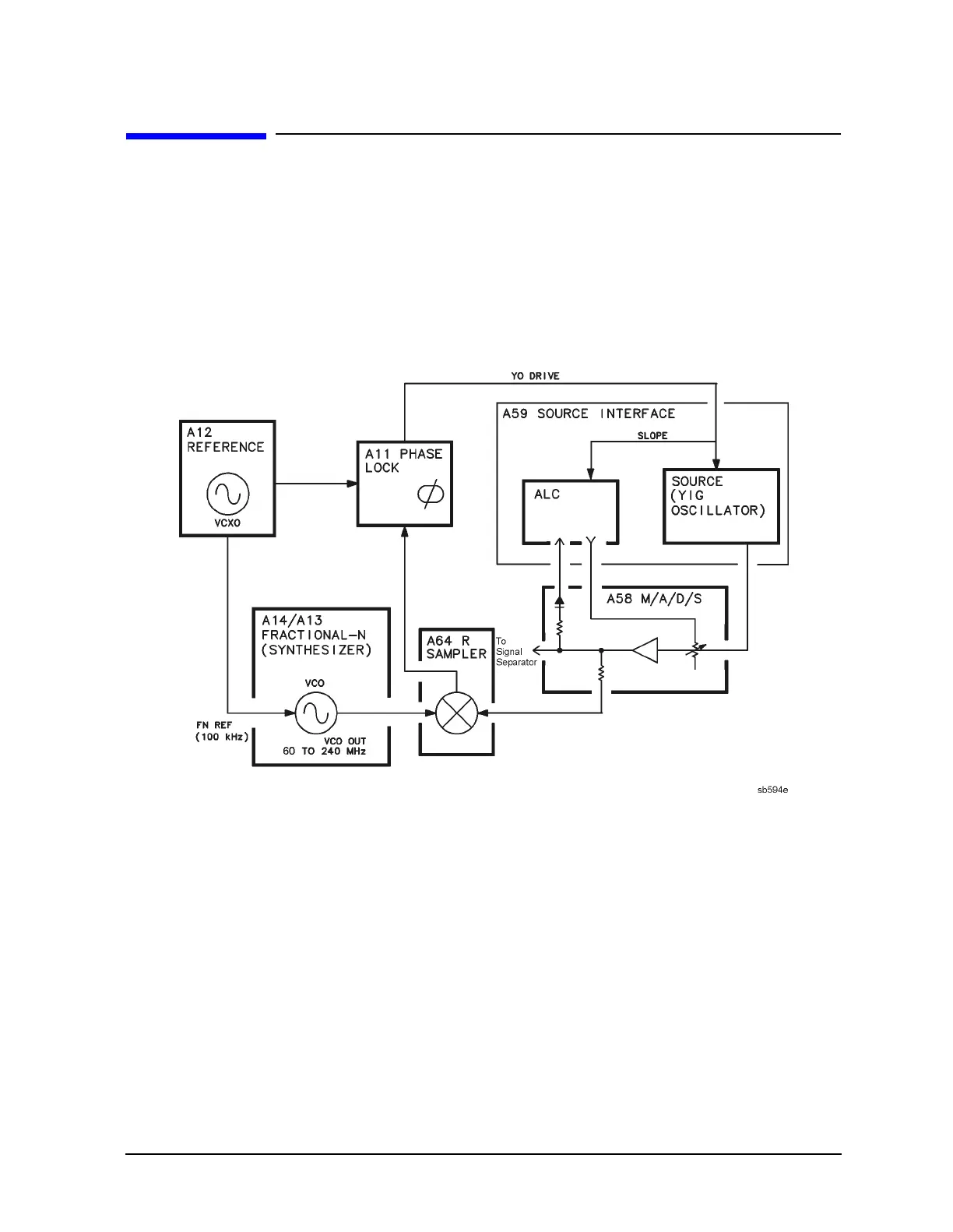Service Guide 12-13
8719ET/20ET/22ET Theory of Operation
8719ES/20ES/22ES Source Group Theory
RF Network Analyzers
Source Group Theory
The source functional group produces a stable output signal by phase locking a YIG
oscillator to a synthesized voltage controlled oscillator (VCO). The full frequency range of
the source is generated in subsweeps by harmonic mixing.
The output at the front panel ports is a swept or a CW signal. Maximum leveled output
powers are listed in Table 12-1 on page 12-4. Figure 12-3 illustrates the operation of the
source functional group.
Figure 12-3 Source Functional Group, Simplified Block Diagram
The subsweep sequence takes place in the following steps. The following list describes the
details of this process, and provides additional information on the assemblies in the source
group.
1. The source is pretuned low. The source signal (SOURCE OUT) is fed to the R sampler.
2. A signal (VCO OUT) is generated by the VCO in the fractional-N synthesizer.
3. A comb of harmonics (1st LO) is produced in the pulse generator.
4. A synthesizer harmonic (1st LO) and the source signal (SOURCE OUT) are mixed in
the sampler. A difference frequency (1st IF) is generated.
5. The 1st IF signal from the R sampler is fed back and compared to a reference. A tune
current is generated.
6. The tune current is used to set the frequency of the source (YIG Oscillator).

